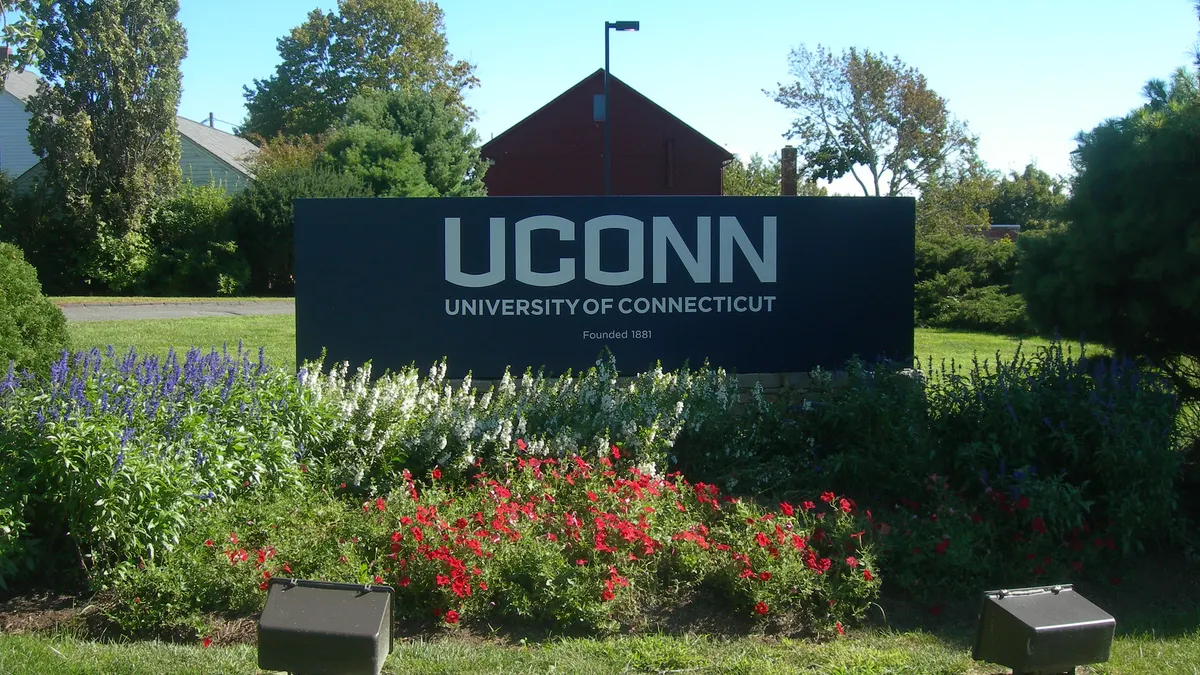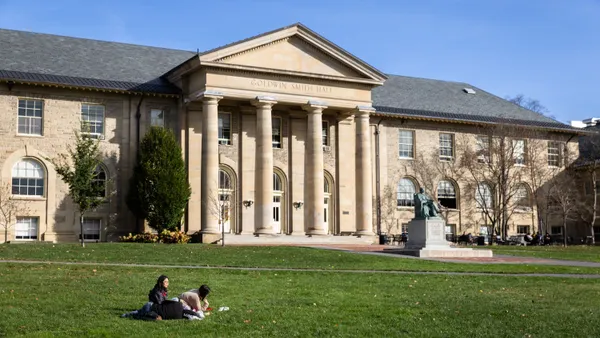Dive Brief:
- The University of Connecticut’s top leaders indicated that workforce cuts and other austerity measures lie ahead as the public institution manages significant state and federal funding shortfalls.
- In a community message on Monday, the leaders said UConn and its health system are facing a combined $134 million budget gap in fiscal 2026. Driving the deficit are state appropriations set to fall over $110 million short from the previous year and some $95 million less in federal research funding due to lower awards and canceled grants.
- Officials plan to pare down the university’s deficit in part through workforce reductions, starting with a review of temporary employees, as well as heavy hiring restrictions and a potential pause on candidate searches for open jobs.
Dive Insight:
UConn's trustees plan to vote on the institution's fiscal 2026 budget Wednesday after the board's finance committee approved it Tuesday.
The budget measures outlined Monday follow “intensive efforts to build our plans to mitigate the significant fiscal setbacks we are facing,” said President Radenka Maric, Provost and Executive Vice President for Academic Affairs Anne D’Alleva, and Pamir Alpay, vice president for research, innovation and entrepreneurship, in their message
Along with workforce reductions, officials said UConn will restrict employee travel, review service contracts, increase its use of foundation funds and search for new revenue.
Even those measures won’t be enough. UConn plans to use one-time funds — held in hundreds of accounts and budget lines throughout the university — to “get us to the next year,” leaders said. But those funds will not remedy the university’s structural budget deficit.
And there are additional risks. State funding could fall below even the levels factored in for fiscal 2026 as the state manages its own budget throughout the year. In a financial presentation for the board, UConn officials also pointed to potential federal policy changes such as reduced student aid, additional tariffs, and Medicaid and Medicare cuts.
On the brighter side, UConn anticipates added tuition revenue from enrollment growth in addition to increased pledges in its fundraising efforts, both of which would add to its revenue pot and offset some of the declines in public funding.
As the top leaders pointed out, UConn is hardly alone in its budget woes and the cuts being employed to address them.
Just in recent weeks, Temple University, University of Nebraska, Northwestern University, University of Minnesota and many others have announced or proposed significant measures, such as job cuts and tuition hikes, to cope with funding shortfalls in a turbulent financial environment for higher education.















